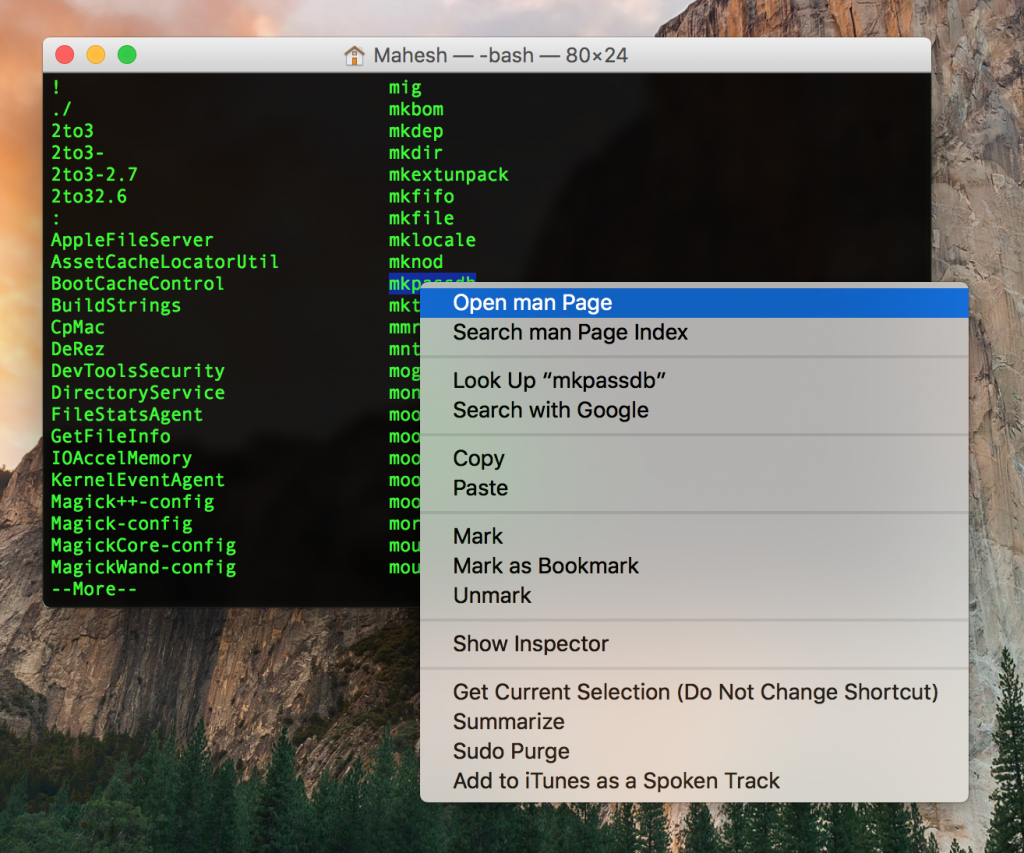

We will see some examples of its usage in the next section. The main use of the latter, however, is to tune filesystem parameters. Those blocks are reserved for the super-user: this is useful to avoid fragmentation and make sure that privileged processes continue to function, since non-privileged processes are forbidden to use them.Īn output which includes almost all the information observed above can be obtained by invoking the tune2fs utility with the -l option. We can also observe the reserved block count, percentage (5% by default). Journal features: journal_incompat_revoke journal_64bit journal_checksum_v3Īs you can see very important information about filesystem are displayed, such as the UUID, features and the default mount options.
#EXTFS TERMINAL COMMANDS HOW TO#
Let’s see an example of how to do it, and analyze the output returned by the command: $ sudo dumpe2fs -h /dev/sda1Īs you can notice, we invoked the program with the -h option, what is it for? When it is used, the behavior of dumpe2fs is altered so that only superblock information are included in the output: dumpe2fs 1.45.6 (2)įilesystem UUID: e69e2748-b575-4f3d-90a0-ab162ef18319įilesystem features: has_journal ext_attr resize_inode dir_index filetype needs_recovery extent 64bit flex_bg sparse_super large_file huge_file dir_nlink extra_isize metadata_csumįilesystem created: Thu Sep 9 15:49:37 2021 All we need to do is to invoke the utility and provide the path of the device containing the filesystem as argument. The dumpe2fs utility let us retrieve information about ext2/3/4 filesystems. Getting ext filesystems information with dumpe2fs

$ – requires given linux-commands to be executed as a regular non-privileged user # – requires given linux-commands to be executed with root privileges either directly as a root user or by use of sudo command
#EXTFS TERMINAL COMMANDS SOFTWARE#
Requirements, Conventions or Software Version Used Software requirements and conventions used Software Requirements and Linux Command Line Conventions Category How to get information and adjust ext filesystems parameters using dumpe2fs and tune2fs How to set the filesystem default mount options.How to enable or disable filesystem features.How to change the amount of the filesystem reserved blocks.How to retrieve ext filesystems information using dumpe2fs.In this tutorial we see how to use two of them: dumpe2fs and tune2fs, respectively to retrieve information and tune its parameters. Released in 2008, ext4 is the more recent, and currently the default filesystem on many Linux distributions.Ī common set of utilities made to work with these filesystems are part of the e2fsprogs package. It has no journal feature, which is the biggest advantage of its successor over him: ext3. The first one, ext2 (second extended filesystems) is, as its name suggests, the older of the three. The ext2, ext3 and ext4 filesystems are some of the most known and used filesystems specifically designed for Linux.


 0 kommentar(er)
0 kommentar(er)
